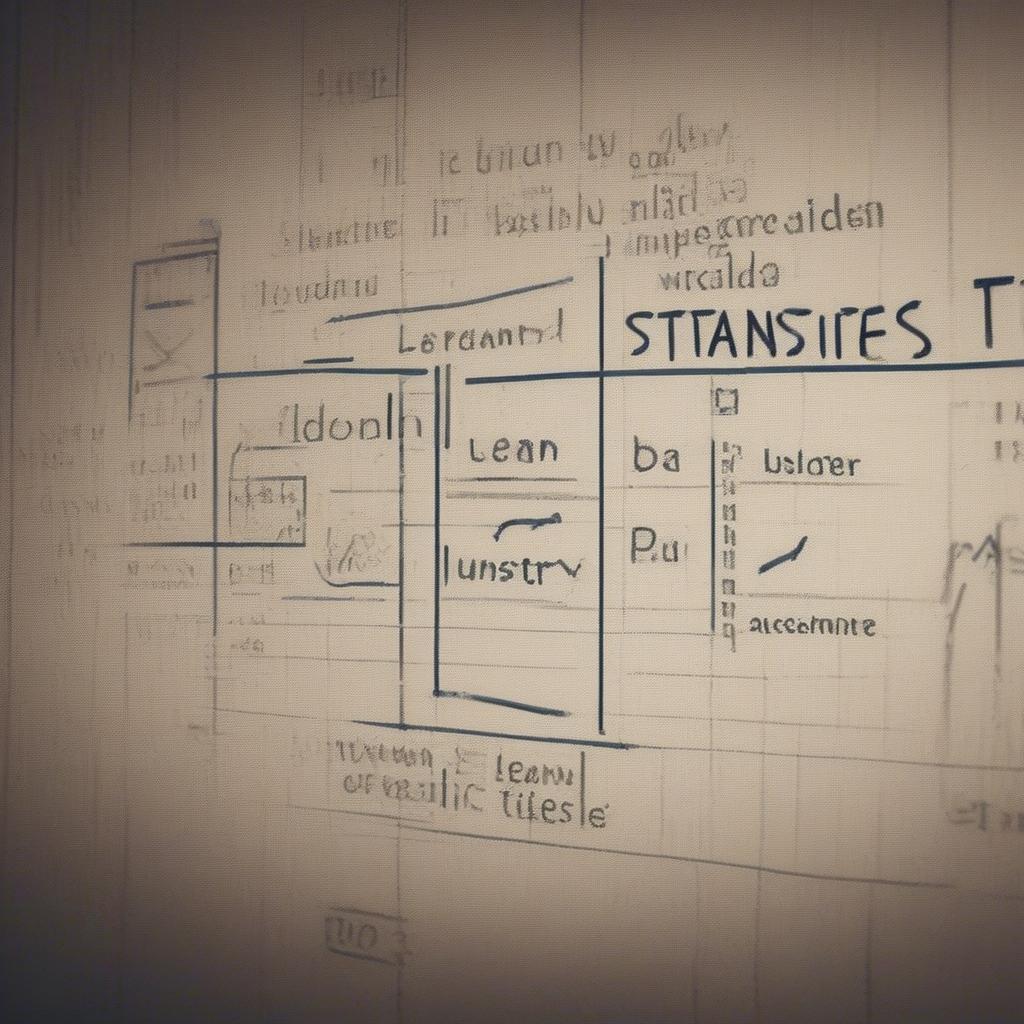
The Unseen Currents Shaping Your Freelance Success
Imagine a boat navigating a vast ocean. The waters aren’t still; they’re constantly moving, with currents swirling beneath the surface. These currents, though invisible, dictate the direction and speed of the boat. For freelancers, industry trends are those unseen currents. They are the dynamic forces that shape the freelance market, influence client demands, and ultimately, determine the success of your business. Ignoring them is like sailing without a compass, leading to stagnation and missed opportunities. Why is keeping your finger on the pulse so critical? Because the freelance landscape is constantly evolving. What’s in demand today might be obsolete tomorrow.
Why Sticking to the Status Quo is a Recipe for Disaster
The allure of routine can be powerful. You’ve perfected your skills, built a solid client base, and found a comfortable rhythm. Why rock the boat? Because complacency is the silent killer of freelancer growth. The world doesn’t stand still, and neither should you. Failing to adapt to market trends means:
- Losing relevance: Your skills become outdated, clients look elsewhere, and your value diminishes.
- Missed opportunities: You’ll be unaware of emerging technologies, growing markets, and lucrative new niches.
- Stagnant income: Your earning potential plateaus, while others who adapt, soar ahead.
- Increased competition: You’ll be competing with a rising tide of freelancers who are actively learning and improving.
- Professional frustration: Feeling stuck in a rut can lead to burnout and dissatisfaction.
Staying informed about industry trends isn’t just a nice-to-have, it’s a survival mechanism for thriving in the freelance world.
Decoding the Language of Industry Trends: What are We Actually Talking About?
“Industry trends” can feel like a vague concept. Let’s break it down into manageable pieces. Essentially, industry trends encompass:
- Technological advancements: New tools, software, and platforms changing the way work is done. Think AI, automation, and virtual collaboration.
- Shifting client needs: Evolving demands and preferences, driven by economic shifts and changing business landscapes. Are clients now prioritizing sustainability or data security, for example?
- Emerging skills: Which talents and expertise are becoming increasingly valuable? Are graphic designers learning animation? Are writers incorporating SEO into their craft?
- Economic factors: Broad economic changes influencing client budgets and project availability. How are inflation and recessions affecting spending?
- Social and cultural shifts: Changing values and preferences impacting client communication and project approach. How are diversity, inclusivity, and remote work shaping the market?
- Regulatory changes: New laws and policies impacting your industry. Are there new data privacy regulations that affect your clients and their projects?
Understanding these different facets allows you to anticipate, adapt, and even shape the direction of your freelance career.
The Benefits: How Staying Ahead Can Propel Your Freelance Career
The advantages of tracking industry trends are numerous and far-reaching. By consistently learning and adapting, you can:
- Boost Your Earning Potential: Understanding which skills are in high demand allows you to charge premium rates for your services.
- Attract Better Clients: By offering specialized expertise, you’ll position yourself as a go-to professional for high-value projects.
- Increase Efficiency: Utilizing new tools and technologies will help you streamline your processes and work more productively.
- Gain a Competitive Edge: Staying up-to-date separates you from the competition, making you a more attractive choice for clients.
- Become a Leader: By anticipating changes and adapting first, you can become an industry thought leader, attracting more clients and opportunities.
- Enhance Job Satisfaction: Continuous learning keeps your work fresh and engaging, preventing burnout and fostering a sense of accomplishment.
- Build a Resilient Business: Adapting to change allows you to withstand economic downturns and other market shifts.
These benefits aren’t hypothetical, they are the lived experiences of freelancers who prioritize ongoing learning and adaptation.
How to Identify and Track Industry Trends: A Practical Guide
Identifying industry trends isn’t a mystical process; it’s about actively gathering and processing information. Here’s a practical, step-by-step approach:
1. Become a Voracious Consumer of Information
- Read Industry Blogs and Publications: Subscribe to newsletters, podcasts, and blogs relevant to your niche. Set aside time each week to catch up on the latest news and insights.
- Follow Influencers and Thought Leaders: Identify key figures in your field and follow them on social media. Pay attention to their thoughts, discussions, and predictions.
- Join Online Communities and Forums: Connect with other freelancers in your industry and participate in discussions. These conversations can offer valuable insights into emerging trends.
- Attend Webinars and Online Events: These events provide valuable learning opportunities and keep you informed about new developments.
- Explore Industry Reports and Research: Look for reputable sources that publish data and analysis on industry trends. This can give you a broader perspective.
2. Leverage Social Listening Tools
- Monitor relevant hashtags: Track trending hashtags on social media related to your industry and skills. This will give you a real-time pulse of what’s being discussed.
- Utilize keyword research tools: See what people are searching for related to your niche. This can reveal emerging client needs and priorities.
3. Pay Attention to Your Clients
- Ask for feedback: Regularly seek feedback from your clients about their needs, challenges, and evolving priorities.
- Analyze project patterns: Look for recurring themes in the projects you’re offered and the feedback you receive. This can indicate emerging trends.
4. Experiment and Test New Things
- Try new tools and technologies: Don’t be afraid to experiment with new software, platforms, and techniques. This will give you firsthand experience of emerging trends.
- Offer new services: As you identify new trends, consider adding complementary services to your portfolio.
- Adjust your offerings: Regularly evaluate your current services and make adjustments to align with emerging client needs and market demands.
Actionable Strategies: Turning Knowledge into Results
Knowing about industry trends is only half the battle. The other half involves taking concrete steps to adapt and grow. Here’s how to translate your insights into action:
1. Invest in Skills Development
- Identify skill gaps: What skills are trending, and where are you lacking? Create a targeted learning plan to address these gaps.
- Take online courses: Numerous platforms offer courses to enhance your skills in specific areas. Focus on those relevant to your industry and your career goals.
- Attend workshops and training programs: Hands-on training can provide practical skills and help you keep up to date with new technologies.
- Seek mentorship: Connect with experienced professionals who can offer guidance and support.
2. Update Your Portfolio and Website
- Showcase new skills: Highlight your expertise in emerging areas to attract relevant clients.
- Adjust your messaging: Align your website and portfolio with current industry trends. Use keywords that are relevant to the current market.
- Testimonials from happy clients: Showcase social proof to make your offer more attractive to potential clients.
- Keep it Fresh: Ensure your work reflects your current skill set.
3. Network and Collaborate
- Attend virtual networking events: Connect with other professionals in your industry and explore potential collaborations.
- Build relationships with other freelancers: Working with others can help you grow and learn.
- Join relevant online communities: Participate in conversations and build your professional network.
4. Adjust Your Pricing Strategy
- Research competitive rates: Ensure your pricing reflects the value you provide and the current market trends.
- Offer tiered packages: Cater to different budget levels and provide clients with options.
- Charge premium rates for specialized skills: Don’t be afraid to charge higher rates for services that are in high demand.
5. Embrace Flexibility and Agility
- Be prepared to pivot: The freelance landscape is always changing, so be ready to adjust your plans as needed.
- Experiment with new business models: Consider different ways of delivering your services, such as offering online courses or digital products.
- Be open to new opportunities: Don’t limit yourself to what you’ve always done. Explore new possibilities and embrace change.
Real-World Examples: How Freelancers Are Benefiting From Staying Updated
Let’s see how this plays out in real life.
- The Graphic Designer: A graphic designer initially focused on print design but noticed the increasing demand for motion graphics. They invested in learning animation and video editing and now offer a wider range of services, attracting a new set of clients.
- The Content Writer: A content writer who was mainly writing articles began to see a rise in the importance of SEO. They took an online course, became proficient, and now offer SEO-optimized content, commanding higher rates.
- The Web Developer: A web developer noticed that headless CMS options were trending. They learned to use platforms like Strapi and Next.js and can now offer a modern approach to website development, attracting forward-thinking clients.
These examples demonstrate how proactively adapting to market trends can be a game-changer for freelance careers.
Learn Business: Your Partner in Freelance Success
Navigating the ever-changing world of freelancing can be daunting, but you don’t have to do it alone. Learn Business is dedicated to empowering freelancers with the knowledge, tools, and resources they need to thrive. We understand the specific challenges that freelancers face, and we provide tailored support to help you succeed.
How Learn Business Supports Freelancers
- Tailored templates: Learn Business offers customizable templates designed for various aspects of freelancing, from creating professional proposals to managing invoices and tracking projects. These templates save you time and ensure a polished professional appearance.
- Business guidance: We provide expert advice on developing a strong business plan, setting goals, managing finances, and building a successful brand. We can help you create a roadmap for your freelance career, setting you up for sustainable growth.
- Industry insights: We provide guidance on emerging industry trends and how to use them to gain a competitive advantage. We help you understand the changing freelance market and adapt your strategies accordingly.
- Community support: You’ll become part of a supportive community of like-minded freelancers where you can connect, share experiences, and learn from each other. This supportive network is critical for growth and preventing isolation.
- Skill development resources: Learn Business will help you identify skill gaps and provide access to learning materials. This ensures you’re well-equipped to stay up-to-date with the latest market trends.
- Continuous Improvement: We are committed to keeping our resources updated to match the latest trends, so you’ll always have access to the most relevant information and tools.
Learn Business is more than just a resource; it’s a partner in your freelance journey. We’re committed to helping you build a sustainable, successful, and fulfilling career by staying ahead of industry trends and making data-driven decisions for your freelancer growth.
The Ongoing Journey: Making Staying Updated a Habit
Staying updated with industry trends isn’t a one-time task; it’s an ongoing journey. The freelance landscape is in constant flux, so you need to make continuous learning and adaptation a core part of your workflow. Here’s a template for integrating this into your routine:
The Weekly Update Routine
- Monday: Dedicate one hour to catching up on industry news. Review blog posts, articles, newsletters, and podcast episodes.
- Tuesday: Conduct a social media scan for trending topics and relevant hashtags related to your field.
- Wednesday: Review feedback from your clients and look for any recurring themes or patterns.
- Thursday: Spend time exploring new tools, platforms, or technologies that have emerged.
- Friday: Plan your actions for the coming week based on your findings. This could include skill development, updating your portfolio, or adjusting your prices.
This structured approach makes tracking market trends a manageable and sustainable habit.
Key Takeaways: Your Path to Freelance Success
- Industry trends are the unseen currents shaping your freelance success. Ignoring them is a recipe for stagnation.
- Staying updated with market trends helps you boost your income, attract better clients, and gain a competitive advantage.
- You can identify and track industry trends by reading blogs, following influencers, and paying attention to your clients.
- Translate your insights into action by investing in skills development, updating your portfolio, and adjusting your pricing.
- Learn Business can provide the tools, templates, and guidance you need to adapt and thrive in the freelance world.
By embracing continuous learning, adaptability, and the power of informed decisions, you can build a successful and fulfilling freelance career. Remember that staying informed about industry trends isn’t just an option; it’s the foundation upon which your long-term success is built.



Leave a Reply